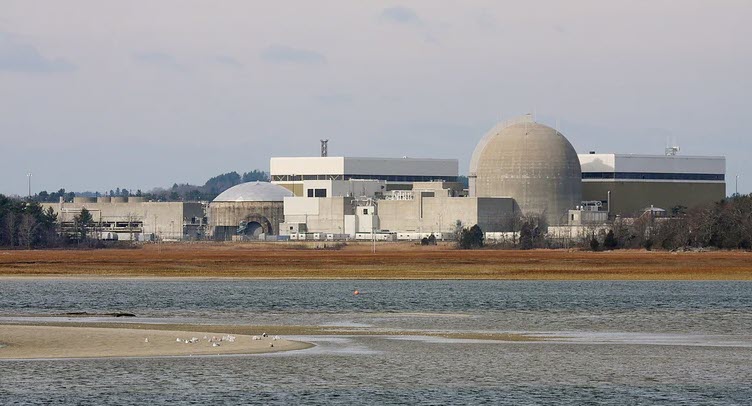energy central
Oil & Gas 360 Publishers Note: Paul writes an excellent article, and the world needs a balanced diet of solar, wind, nuclear, and fossil fuels to get the lowest kWh to all people around the world to help stop poverty.
The US is the world’s largest producer of nuclear power, accounting for more than xx% of worldwide nuclear generation. But that energy option has lost traction. In the past few decades, few plants have been built, and the number coming offline grows. What does the future hold for this energy option?
Nuclear has alluring features. A key one being that its lack of CO2 emissions offers energy providers an alluring alternative to traditional fossil fuels

The Seabrook nucler power station in Massachusetts. Photo courtesy Jim Richmond/ChNPP/Wikipedia
Construction Plans are Stymied
Yet in the past few decades, construction of new US plants has largely ceased. Many existing facilities have been aging, neared the end of their lifecycle, and been closed. New construction has largely ceased because of complex regulations and resistance from opponents, who fear this energy option because of its checkered past.
One example of the challenges is the Vogtle nuclear plant in Georgia. Two new reactors were supposed to be in commercial operation by the spring of 2016 and 2017 but the project has run into a series of challenges, delays, and problems. The Georgia Power project is reportedly more than $1 billion over budget and new power is not expected to be operational until November 2021 at the earliest.
The South Korean Model
Consequently, its share of the power generation has been shrinking, but it has been making inroads in other countries. For instance, South Korea is now the world’s fifth largest generator of nuclear power, despite being a country that is the size of Indiana.
In 2019, South Korea’s nuclear fleet generated 139 Terawatthours (TWh) of electricity, making it the fifth-largest nuclear power producer in the world and accounting for 26% of the country’s total electricity generation. With 24 operating nuclear reactor units, South Korea has the highest density of nuclear reactors (defined as the number of reactors per square mile) in the world.
Most of South Korea’s nuclear reactors are located at two complexes in the densely populated southeastern part of the country, near the cities of Gyeongju, Ulsan, and Busan, which are major electricity demand centers and home to many heavy manufacturing plants. The country has four reactors under construction at two other sites, Shin Kori and Shin Hanul, which will add another 5.3 GW of nuclear generation capacity.
What Next?
Nuclear power has the potential to act as a CO2 bridge from traditional fossil fuels to renewables. However, the option in the US has been stymied by project delays, cost overruns, regulatory constraints, and public resistance. What do you think the future for nuclear in the US?

